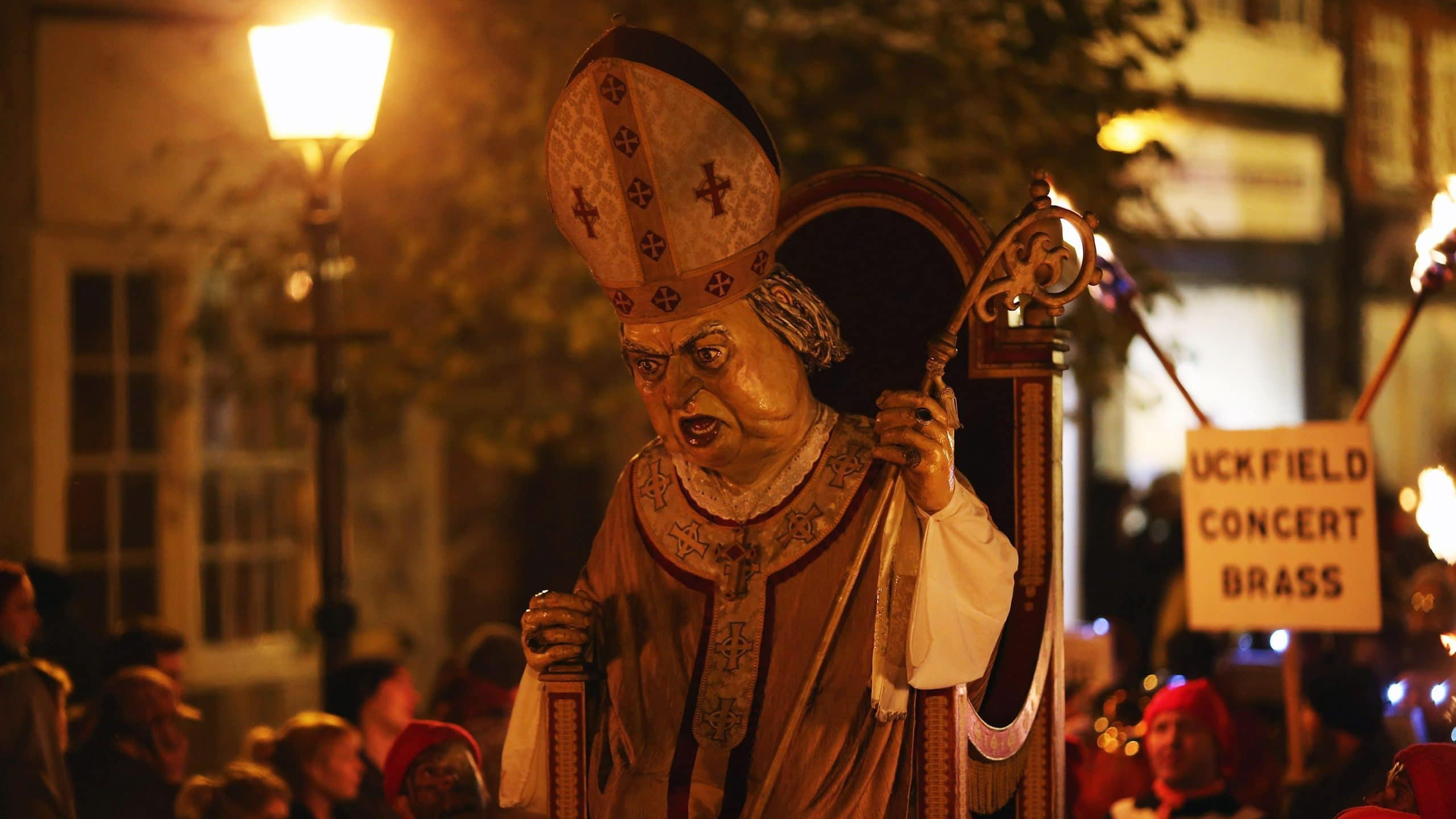
The leaves turn red, the wind blows cold, and all about the land, stacks of damp wood are heaped high on village greens. Many associate the fifth of November with fireworks and toffee apples, but of course, it was initially all about the bonfire, which is why many call it bonfire night.
Don’t you dare call it ‘fireworks night’ in my presence. The bangs and sparks of the fireworks are a fitting addition to the proceedings, though, since they are congruous with its original purpose, which is to remember the attempt by Catholic rebel Guy Fawkes to blow up the Protestant institution of Parliament in 1605.
It is a pretty tame and family-friendly event these days, with many towns now eschewing the traditional burning of an effigy of Guy Fawkes. Easy to forget it was once an orgy of religious hatred, frequently erupting into vandalism and violence.
By the 19th century, violent scenes were typical in cities such as Exeter and Guildford. Gangs of young men called the Guildford Guys would terrorise the respectable middle-class households of the town. One year they went so far as to throw a policeman on a bonfire.
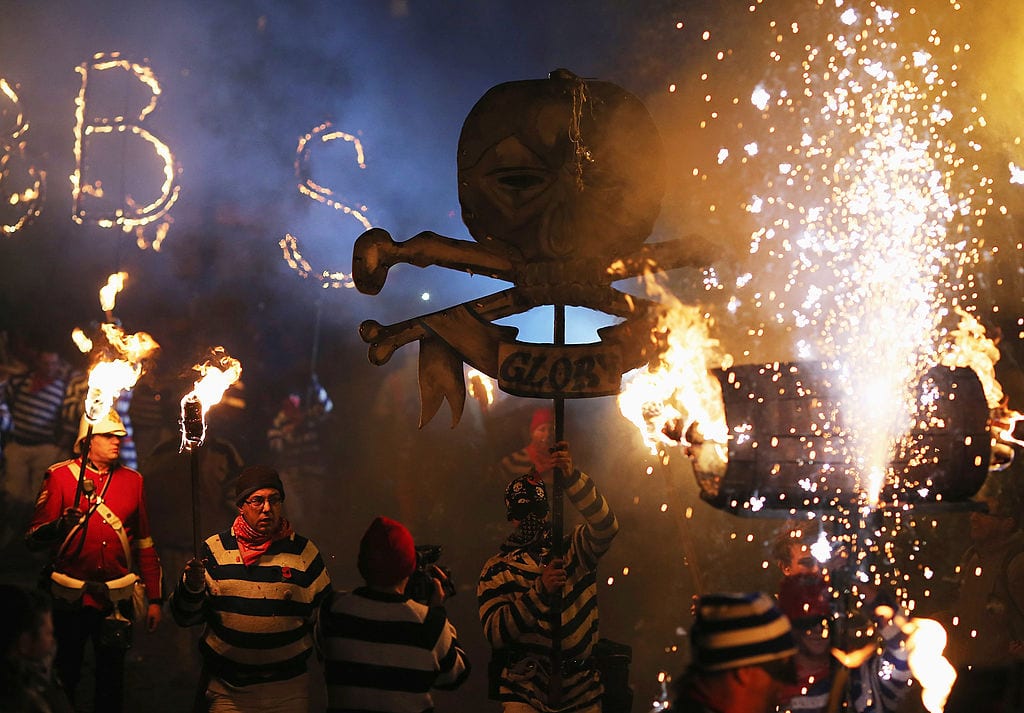
LEWES, ENGLAND – NOVEMBER 05: Bonfire societies parade through the streets during the Bonfire Night celebrations on November 5, 2012, in Lewes, Sussex in England. (Photo by Dan Kitwood/Getty Images)
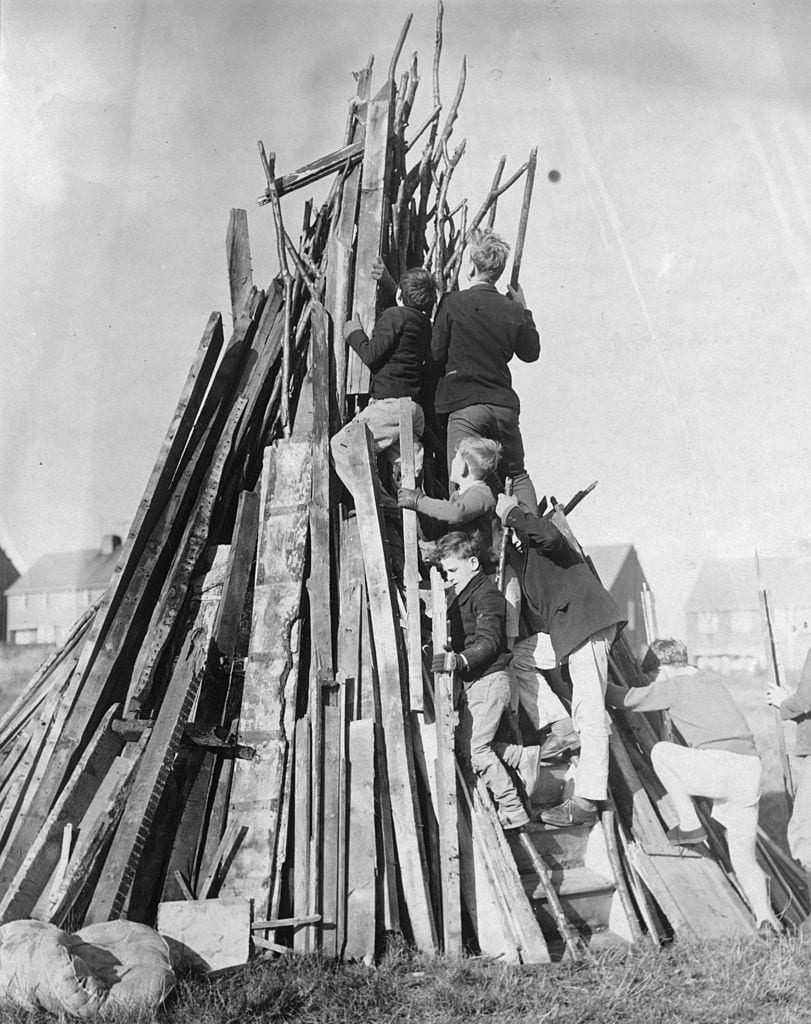
Boys building a bonfire on the downs near Lewes in Sussex in preparation for Guy Fawkes night on the 5th November. (Photo by Evening Standard/Getty Images)

A 19th-century lithograph of children playing around a fire on Bonfire Night
The only places that have preserved the older, more riotous traditions of Bonfire Night are Ottery in Devon and Lewes in Sussex. In Lewes, there are still associations called bonfire societies, and each one is connected to a different pub in the town.
The anti-Catholic feeling has deep roots there, so it’s not surprising they parade enormous banners reading “no popery” – they remember the seventeen martyrs of Lewes who Mary I burnt to death in the 1500s. They don’t just burn the effigies of Guy Fawkes, either. The bonfire boys each year create and burn wonderful effigies of national hate figures, including everyone from Angela Merkel to Osama bin Laden.
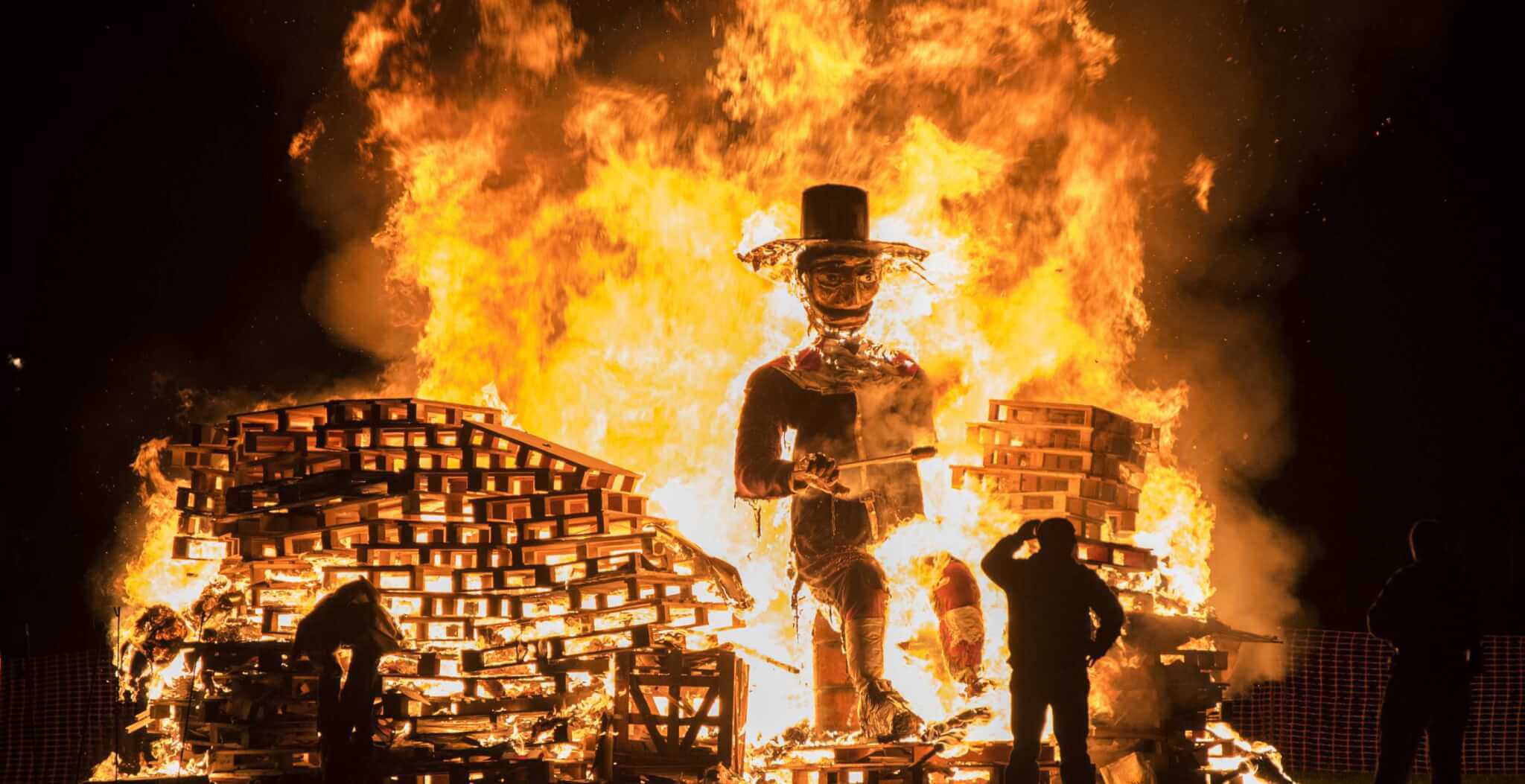
A Guy Fawkes effigy up in flames
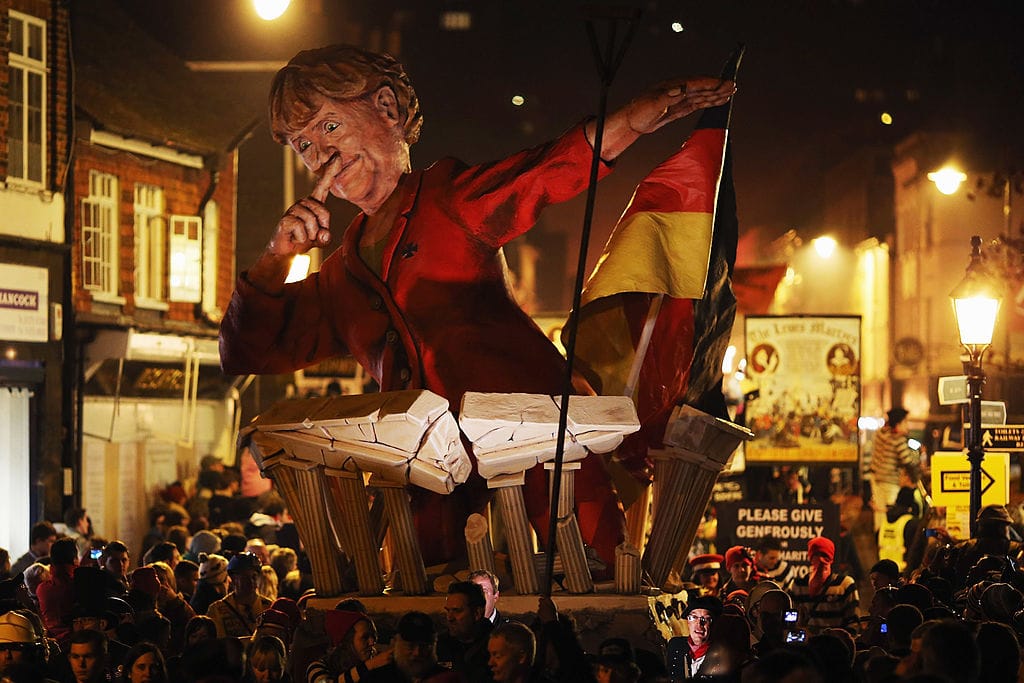
An effigy of German Chancellor Angela Merkel is paraded as bonfire societies process through the streets during the Bonfire Night celebrations
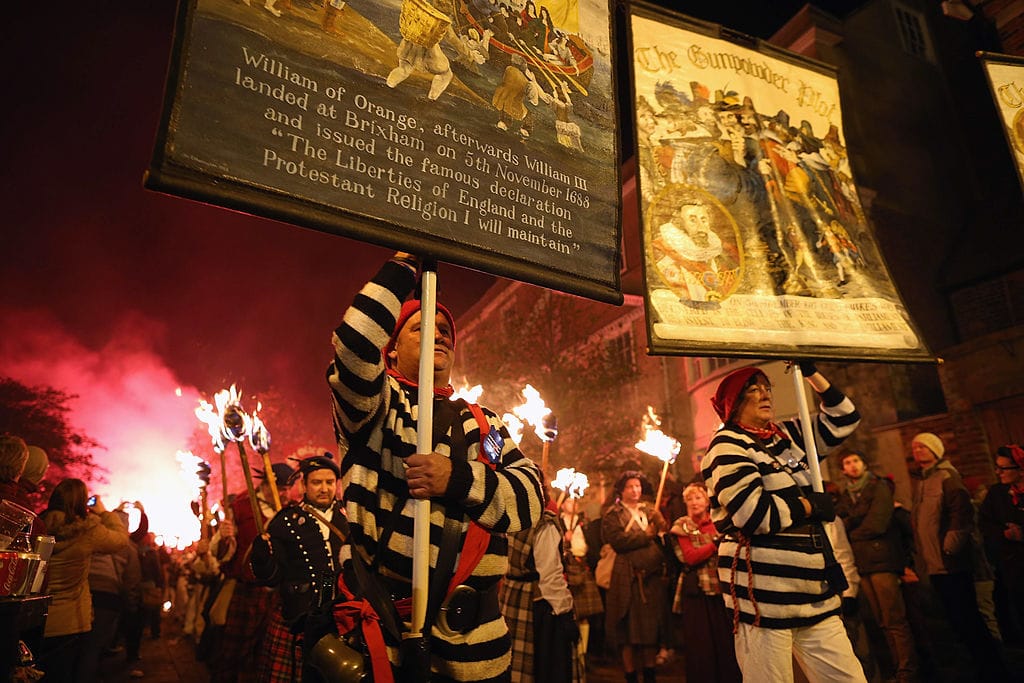
Bonfire Night procession in Lewes, Essex
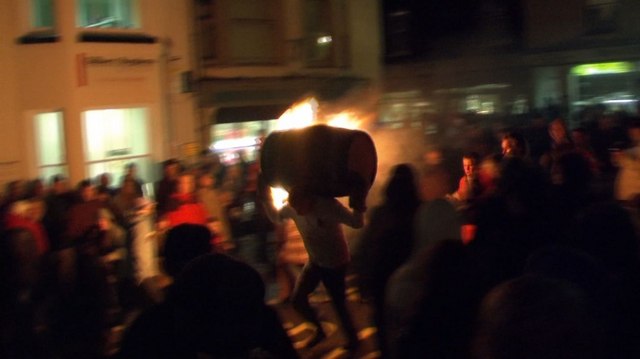
Ottery man charging through the streets with a burning barrel on his shoulders
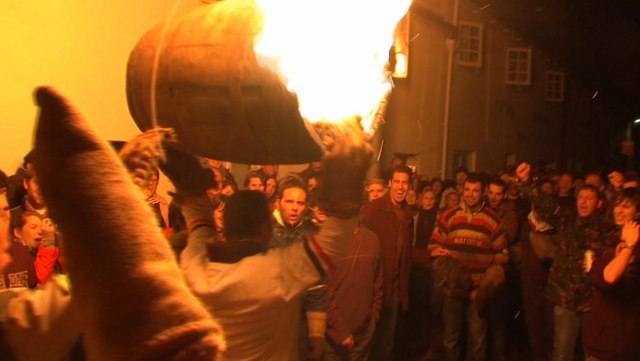

Lewes and Ottery both preserve the tradition of burning barrels of tar, but while in Lewes, this is done by holding the barrel aloft on a pole, in Ottery, brave young men actually haul the great flaming mass on their shoulders and charge through the streets with it.
Gormless outsiders who gather to witness the spectacle are surprised when the barrellers charge right into them, knocking them down if they fail to move aside. Both celebrations come under frequent fire for health and safety concerns, as well as from politically correct hand-wringers.
Most assume the tar barrels of Ottery date back to 1605, but others are not so sure. The tradition of burning tar barrels used to be more widespread in these islands. In the Shetland islands, between January and March, they celebrate Up Helly Aa, which these days is a Viking-themed fire festival centred on the burning of a longboat, but which used to be all about burning tar barrels until that was abolished in the 1870s due to safety concerns.
The Shetlanders also burned tar barrels on Christmas and New Year’s Eve. So why should we assume the fire traditions now associated with the fifth of November don’t have deeper roots than Guy Fawkes’ gunpowder plot?
In the Devon village of Shebbear, there is no bonfire on the night of the fifth, nor fireworks, nor mention of Guy Fawkes. Instead, they gather before the church where a great boulder has lain since before records began. They call it the Devil’s Stone and believe it must be turned over each year lest the devil plague the village.
Some historians claim that this tradition of turning the stone with poles dates all the way back to Anglo-Saxon times. It seems possible this ancient tradition was moved to the fifth of November in the 17th century when various regional folk traditions were being amalgamated into a nationwide holiday.

Men turn over the Devil’s Stone in Shebbear
The eminent Scottish folklorist James George Frazer wrote in The Golden Bough, published in 1890, that Bonfire night exemplifies “the recrudescence of old customs in modern shapes”. More recently, anthropologists like David Undertown have theorised that Bonfire Night replaced the old Catholic festival of Halloween. This argument is strengthened by the fact that, due to American influence, Halloween has reemerged in Britain and seems to have replaced Bonfire Night as the preeminent autumn festival, at least among younger people.
Other elements of Bonfire Night are clearly unrelated to the gunpowder plot. You will find Morris dancers at the turning of the Shebbear stone and among the bonfire societies of Lewes. While most wear blackface as part of their Morris costumes, one society in Lewes dresses as Zulu warriors with blackened faces and has since changed to brightly coloured face paint so as not to offend.
Morris dancers, up and down the country, have traditionally blackened their faces at various times of the year, from May Day to Christmas. This tradition is not limited to Britain but can be found in Holland, Switzerland, Austria and Macedonia, where the blackened face is one of many monstrous disguises associated with a riotous procession of ghouls, usually around Christmas time. Only in the Netherlands and England were the blackened faces later associated with the unrelated and racist black and white minstrels, which offensively imitated sub-Saharan Africans. Originally the blackened face was a disguise and represented the dead since the pagan winter festival of Yule was associated with the dead rather like Halloween is today.

Welsh border Morris men
The first mention of this custom was by a Roman historian named Tacitus, who described a Germanic tribe he called the Harii, who painted themselves entirely black and attacked their enemies in the darkness of night. Historians now think the Harii were not a tribe at all but that this word is cognate with the Old Norse’ herjar’ meaning army, usually in reference to the Viking god of Yule and death, Odin, who possessed an army of undead warriors called the einherjar. So this tradition of Germanic men painting themselves as black as corpses evolved over millennia to become the processions of ghouls such as the Krampus that we see in some Alpine nations and the Netherlands.
It isn’t hard to imagine how in Britain, the same kinds of ancient Anglo-Saxon customs in which men dressed as the dead, sometimes with blackface, and which in medieval times came to be associated with the Catholic holidays of Christmas and Halloween, were later amalgamated into more standardised and Protestant forms as the fifth of November became the primary festival of fire and hooliganism during the 17th century.



2 Comments
Your comparative treatment of mythic origjns make you a worthy successor to Sir James George Frazer whom you mention. I hope you will publish an annotated version with original sources that some of us can go to other published accounts that give more dates and descriptive details.
I’m quite sure your thesis is right, Thom. I was convinced of that long before you published this piece, from my own study of the evidence.